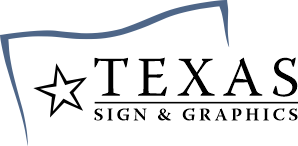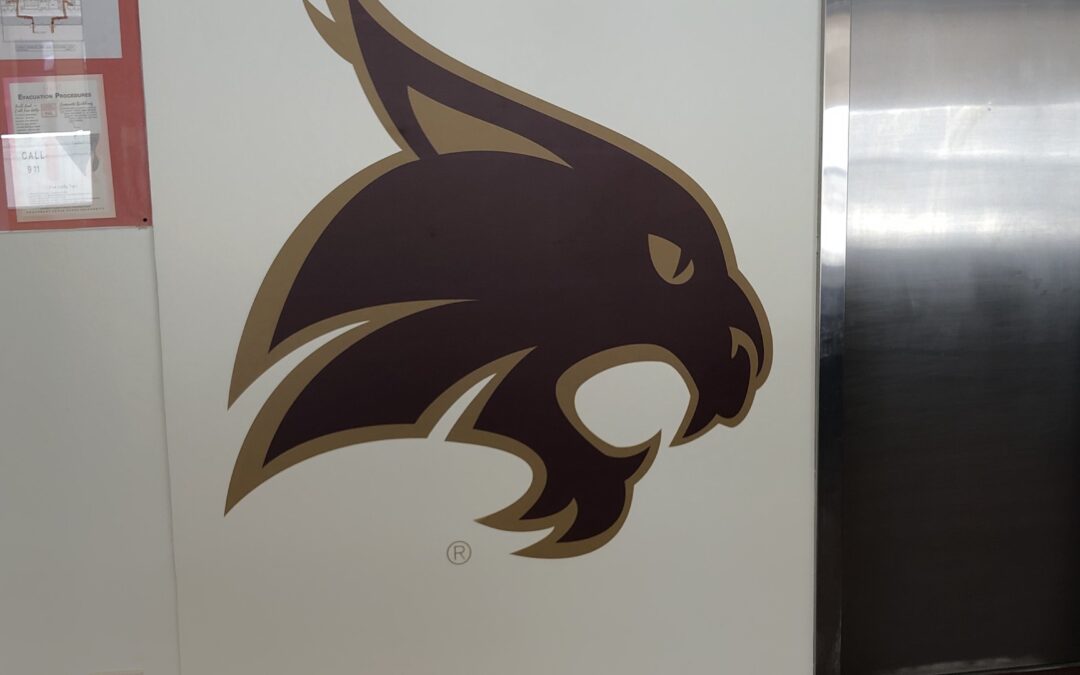In the world of signage, vinyl is a versatile and essential material that can be used for a wide range of applications. Whether your clients need something temporary or permanent, indoor or outdoor, decorative or functional, there’s a type of vinyl that fits the bill. This guide will help you understand the different types of vinyl available and how to choose the right one for your clients’ specific needs.
1. Wall Graphics Vinyl
Applications: Wall graphics are an excellent choice for adding decorative elements to spaces like lobbies, hallways, or homes. They’re popular for showcasing motivational sayings or brand logos in a way that enhances the environment.
Types: Wall graphics vinyl comes in various thicknesses and adhesive strengths. Some are designed for easy removal, making them ideal for temporary installations, while others offer a more permanent bond for long-term use.
Considerations: It’s essential to match the vinyl type to the wall surface. For smooth surfaces, standard vinyl works well, but for textured surfaces like brick or cement, a specialized vinyl designed to adhere to uneven surfaces is necessary.
2. Floor Graphics Vinyl
Applications: Floor graphics are perfect for giving directions, displaying safety instructions, or adding branding elements to high-traffic areas like gyms. They’re durable, anti-slip, and designed to withstand heavy foot traffic without wearing out quickly.
Types: Floor graphics vinyl is typically heavy-duty and comes with an anti-slip laminate for added safety. It’s available in both temporary and permanent options, depending on the intended use.
Considerations: The durability of floor vinyl is crucial, especially in areas with heavy foot traffic. Ensure the vinyl is laminated for extra protection and to prolong its lifespan.
3. Magnetic Printable Vinyl
Applications: Magnetic vinyl is ideal for temporary signage that needs to be easily removable or interchangeable. It’s commonly used for vehicle graphics, where companies can display their name or logo on their vehicles without committing to a permanent adhesive.
Types: This vinyl is printable and can be UV printed in full color, making it a versatile option for creating vibrant, eye-catching designs.
Considerations: Magnetic vinyl is generally not recommended for high-speed vehicles due to the risk of detachment. It’s best suited for cars and trucks that travel at moderate speeds or are parked for extended periods.
4. Cut Vinyl (Single Color)
Applications: Cut vinyl is a go-to for simple, clean designs like lettering or basic shapes. It’s frequently used for window decals, vehicle graphics, and storefront signage.
Types: This vinyl is available in a range of colors and finishes, including matte, gloss, and metallic. After cutting, the excess vinyl is “weeded” away, leaving only the desired design.
Considerations: Cut vinyl is excellent for applications where simplicity and longevity are key. It can be used on a variety of surfaces, but attention should be paid to the adhesive strength and whether the vinyl is intended for indoor or outdoor use.
5. Printable Vinyl
Applications: Printable vinyl is perfect for full-color graphics, allowing for detailed images and vibrant colors. It’s widely used for banners, posters, and vehicle wraps.
Types: Printable vinyl can be UV printed, offering durability and resistance to fading from sunlight. It’s available in both permanent and removable options.
Considerations: When using printable vinyl outdoors, it’s often laminated to protect the print from the elements. The adhesive strength should be chosen based on the surface and the desired longevity of the graphic.
6. Perforated Vinyl
Applications: Perforated vinyl is an excellent solution for one-way visibility. It’s often used on windows where you want to display a graphic on the outside while maintaining privacy or visibility from the inside. Common uses include storefronts, conference room glass walls, and vehicle windows.
Types: Perforated vinyl is available in different levels of transparency, depending on the size and spacing of the perforations.
Considerations: Ensure the perforated vinyl is appropriate for the specific application, especially in areas where privacy or visibility is a concern.
7. Backlit Vinyl
Applications: Backlit vinyl is specifically designed for use in lightboxes, making it ideal for illuminated signs like movie posters or advertising displays in malls.
Types: This vinyl is designed to allow light to pass through, creating a vibrant, illuminated effect. It’s typically UV printed for durability and clarity.
Considerations: The quality of the print is crucial for backlit vinyl, as any imperfections will be more noticeable when illuminated. Always opt for high-resolution printing for the best results.
8. Textured Vinyl
Applications: Textured vinyl adds a tactile element to graphics, making it a unique choice for wall murals or branding elements where a different feel is desired. It can be used to mimic the look and feel of materials like wood, leather, or fabric.
Types: This vinyl comes in various textures and can be both printed on and cut to shape, offering a high level of customization.
Considerations: When using textured vinyl, it’s important to consider the application surface and environment, as some textures may be more prone to wear or damage in high-traffic areas.
9. Vinyl Stickers
Applications: Vinyl stickers are a versatile option for creating small promotional items, bumper stickers, and custom packaging. They’re popular for giveaways at events, as they provide a cost-effective way for companies to promote their brand. Vinyl stickers can also be used for product labels, adding a professional touch to packaging.
Types: Vinyl stickers can be die-cut to any shape and size, making them highly customizable. They can be printed in full color with UV protection to ensure they last outdoors or in various conditions. There are options for both permanent and removable adhesive, depending on the intended use.
Considerations: When creating vinyl stickers, it’s important to consider the surface they’ll be applied to and whether they need to withstand outdoor elements. For bumper stickers or other outdoor applications, a durable, weather-resistant vinyl with strong adhesive is recommended. For packaging or indoor use, a removable adhesive may be preferred to avoid leaving residue when removed.
10. Double-Sided Vinyl Decals
Applications: Double-sided vinyl decals are perfect for glass applications where you want to display different designs on each side. They’re often used on storefront windows, glass doors, or any transparent surface where visibility from both sides is crucial. For example, a business might display a logo facing outward and a “Welcome” message facing inward.
Types: This vinyl is specially designed to hold two different prints on the front and back, allowing for distinct images or messages on each side. It’s ideal for creating dynamic visuals that cater to both indoor and outdoor audiences simultaneously.
Considerations: Double-sided decals are best suited for glass or other transparent surfaces. When applying these decals, it’s important to ensure they are perfectly aligned to prevent any misplacement. The adhesive should be strong enough to hold the decal in place on glass, yet removable without leaving residue if a temporary installation is desired.
Conclusion
Vinyl signage options are incredibly diverse, offering solutions for nearly any application. Whether it’s wall graphics, floor decals, vinyl stickers, or double-sided decals, understanding the unique properties of each type of vinyl will help you guide your clients toward the best choice for their specific needs. With the right vinyl, your clients can achieve stunning, durable, and effective signage that stands the test of time.

